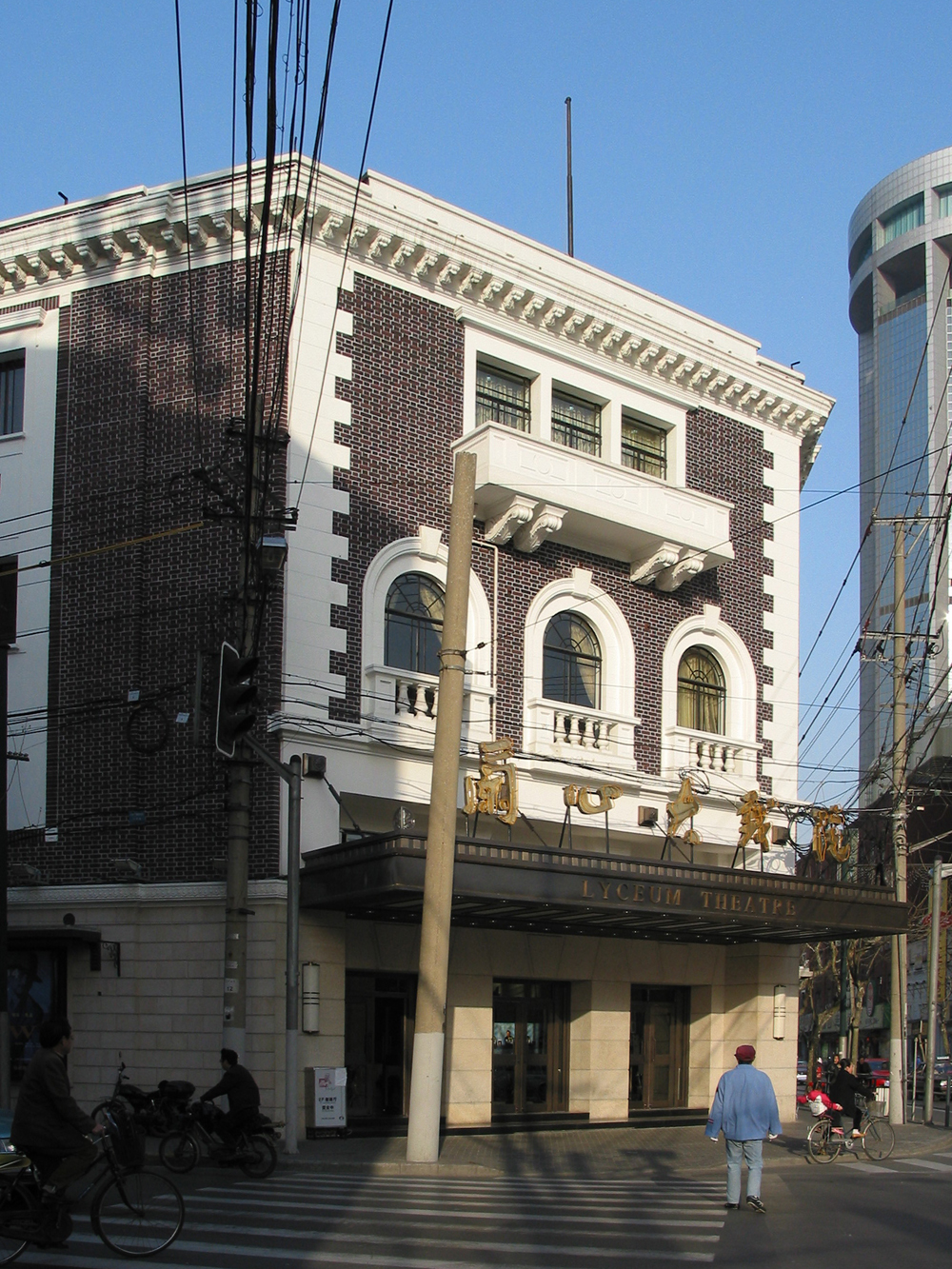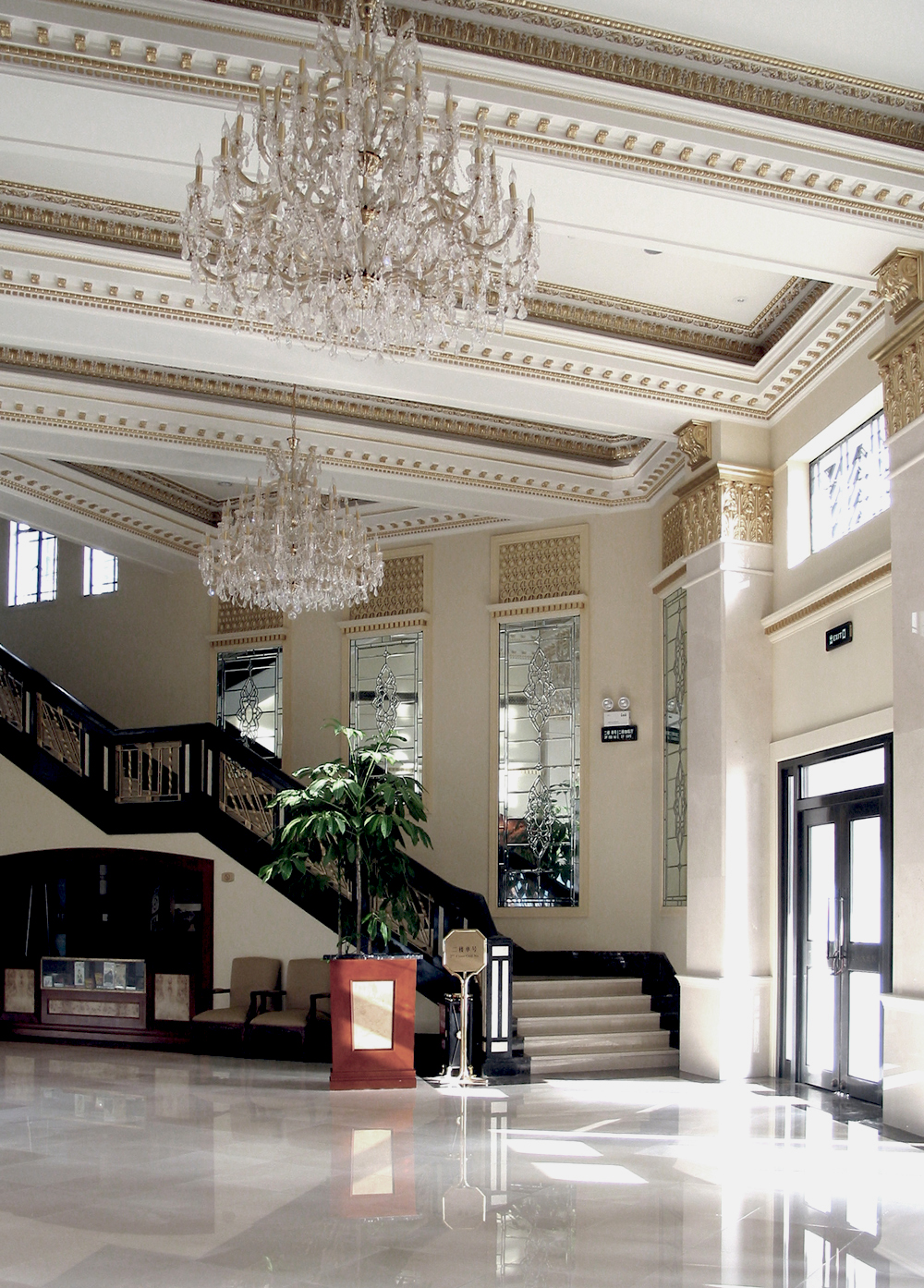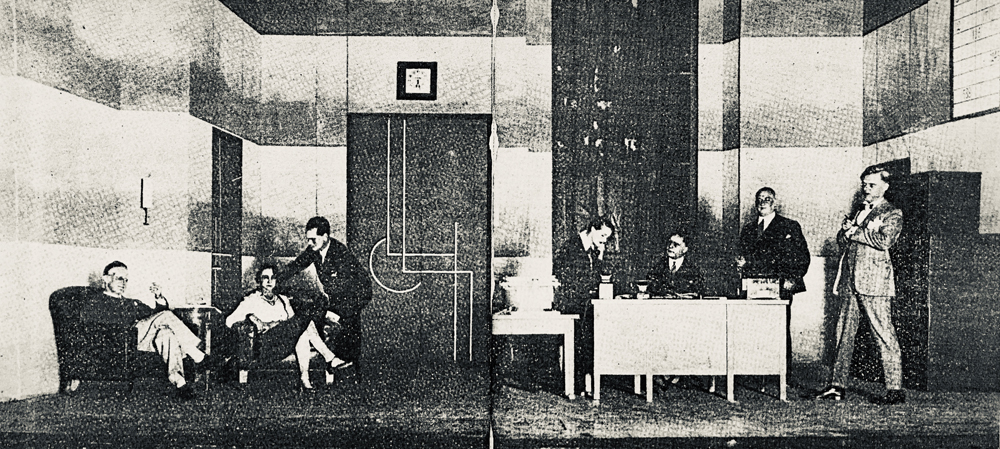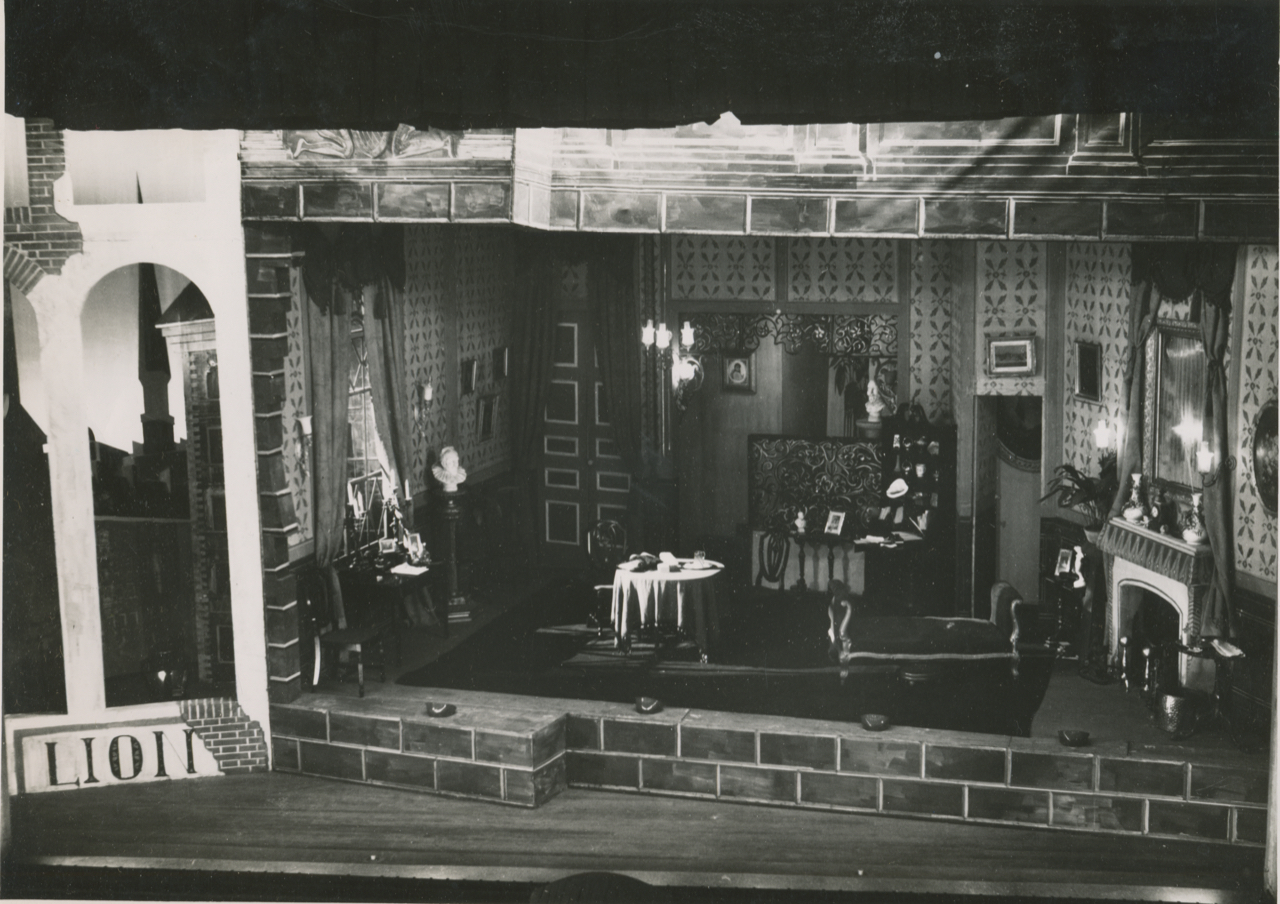Archive
Lyceum Theatre
- Building
Lyceum Theatre
Word Count: 2
- Davies & Brooke, Civil Engineers and Architects
- 1931
101 Route Cardinal Mercier, French Concession (now Maoming Nan Lu, corner of Changle Lu, Huangpu Qu) Shanghai
The new Lyceum Theatre was designed in an eclectic style by British architects Davies & Brooke and opened on 5 February 1931.
Word Count: 20

Lyceum Theatre, facade, photography (© Eduard Kögel 2004). The Lyceum Theatre was designed by the British architects Davies & Brooke in 1931. 
Lyceum Theatre, foyer, photography (© Eduard Kögel 2004). 
Horst zum Eschenhoff, Stage design for the play Arm wie eine Kirchenmaus, photography, Bühnenspiegel im Fernen Osten, 30 October 1929. 
Advertisement for the play Parkstr. 13,Bühnenspiegel im Fernen Osten, 22 March 1939. The stage design was made by Richard Paulick. 
Richard Paulick, Stage design for the British Amateur Dramatic Club around the late 1940s, photography (© Architekturmuseum der TU Munich, Estate Richard Paulick). Bühnenspiegel im Fernen Osten. Shanghai 1925–1943.
Mittenzwei, Werner et al (editors). Exil in den USA – mit einem Bericht „Schanghai“ – Eine Emigration am Rande. Röderberg-Verlag, 1980.
Kögel, Eduard. "Paulick als Bühnenbildner." Bauhaus, Shanghai, Stalinallee, Ha-Neu. Der Lebensweg des Architekten Richard Paulick, edited by Thomas Flierl, Lukas Verlag, 2020, pp. 140–145.Word Count: 49
- Shanghai
- Eduard Kögel. "Lyceum Theatre." METROMOD Archive, 2021, https://archive.metromod.net/viewer.p/69/2952/object/5140-11304825, last modified: 14-09-2021.
-
Alexander A. YaronDesignerJournalistArtistPhotographerShanghai
An autodidact and a versatile commercial artist, Alexander Yaron applied his talent in portraiture, photography, interior design, advertising, layout and illustration. His best known projects were illustrated art magazines and books produced as part of Adcraft Studios, in tandem with Ivan Kounin.
Word Count: 42
Vasily ZasipkinArtistDesignerShanghaiVasily Zasipkin was a prolific artist and and influential teacher, much loved in the diaspora. Having lost his studio and all his work in wartime Shanghai, he started over in Singapore.
Word Count: 31
Leonid SkvirskyPhotographerIllustratorShanghaiLeonid Skvirsky was one of the most successful photographic artists in Shanghai. His experimental take on lighting and staging of the models ensured him critical acclaim, awards in international competitions and patronage of the elites.
Word Count: 35
Modern HomesArchitecture and Furniture CompanyShanghaiThe three firms The Modern Home, Modern Home and Modern Homes existed from 1931 until 1950. Run by the Paulick brothers together with the Jewish emigrant Luedecke, the firms provided work for many emigrants.
Word Count: 32
Richard PaulickArchitectDesignerShanghaiAfter studying with Hans Poelzig, Richard Paulick worked in Walter Gropius’s office and frequented the Bauhaus in Dessau before emigrating to Shanghai in 1933. After his return, he became an influential planner and architect in the GDR, from 1950 until his retirement
Word Count: 41